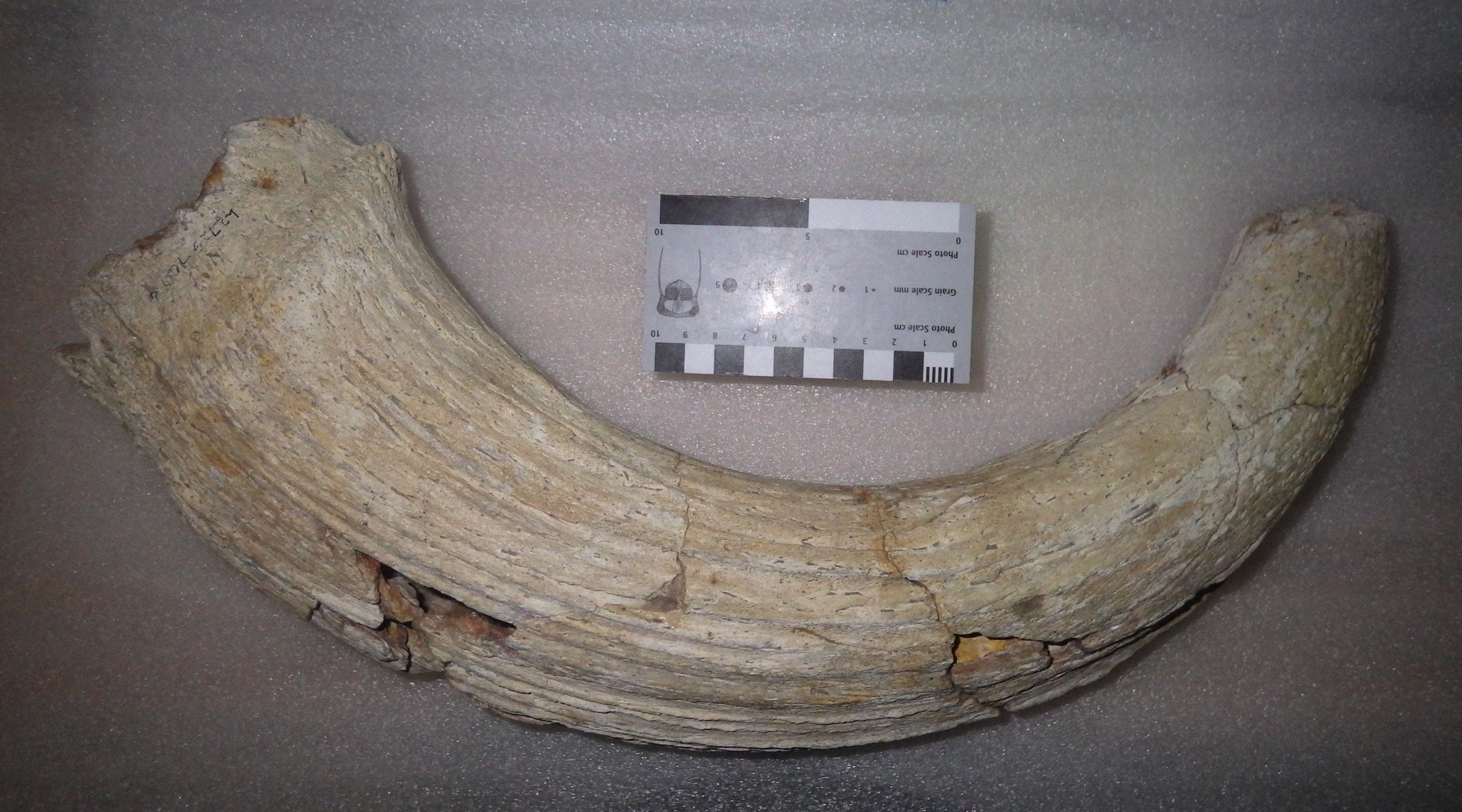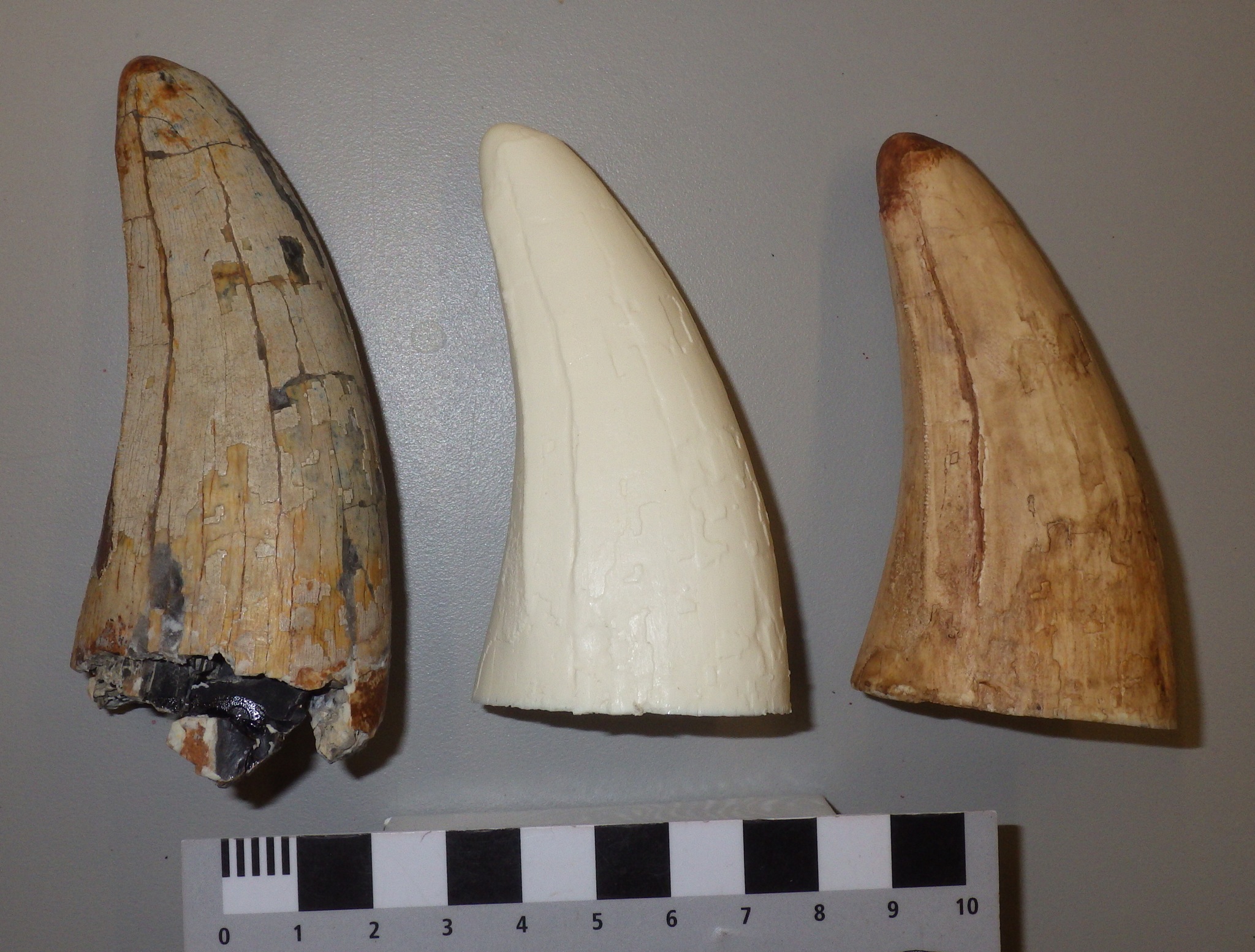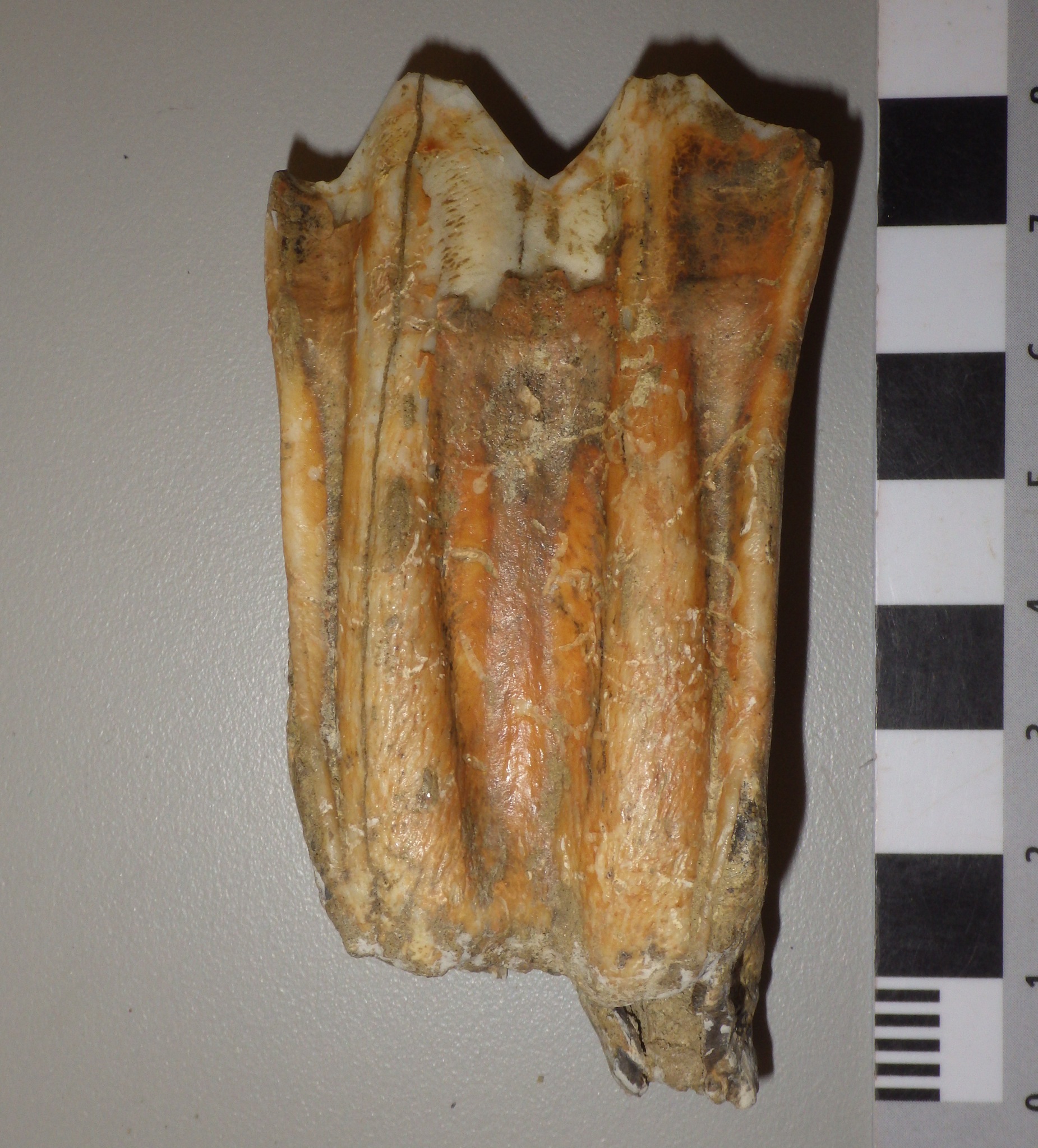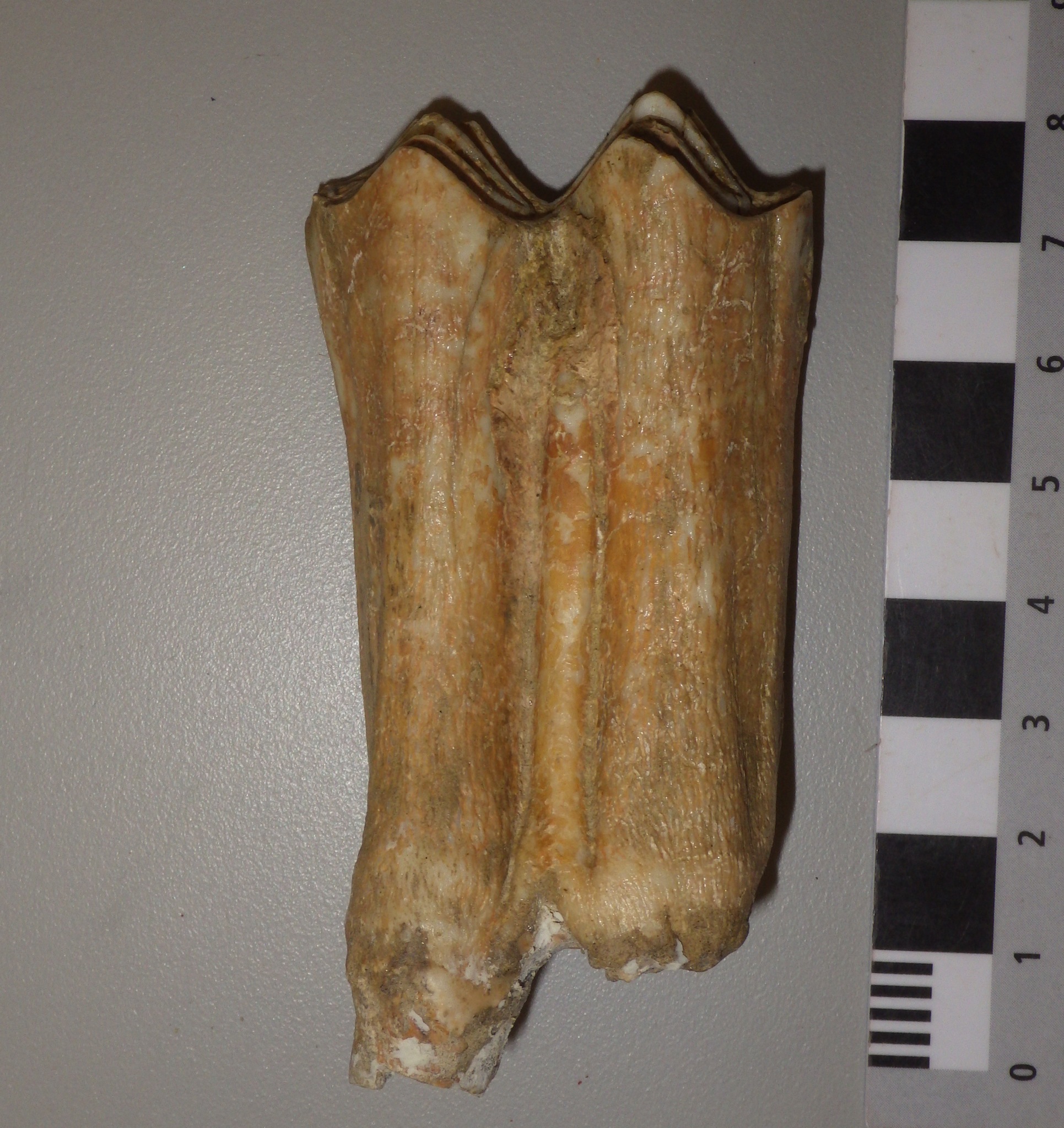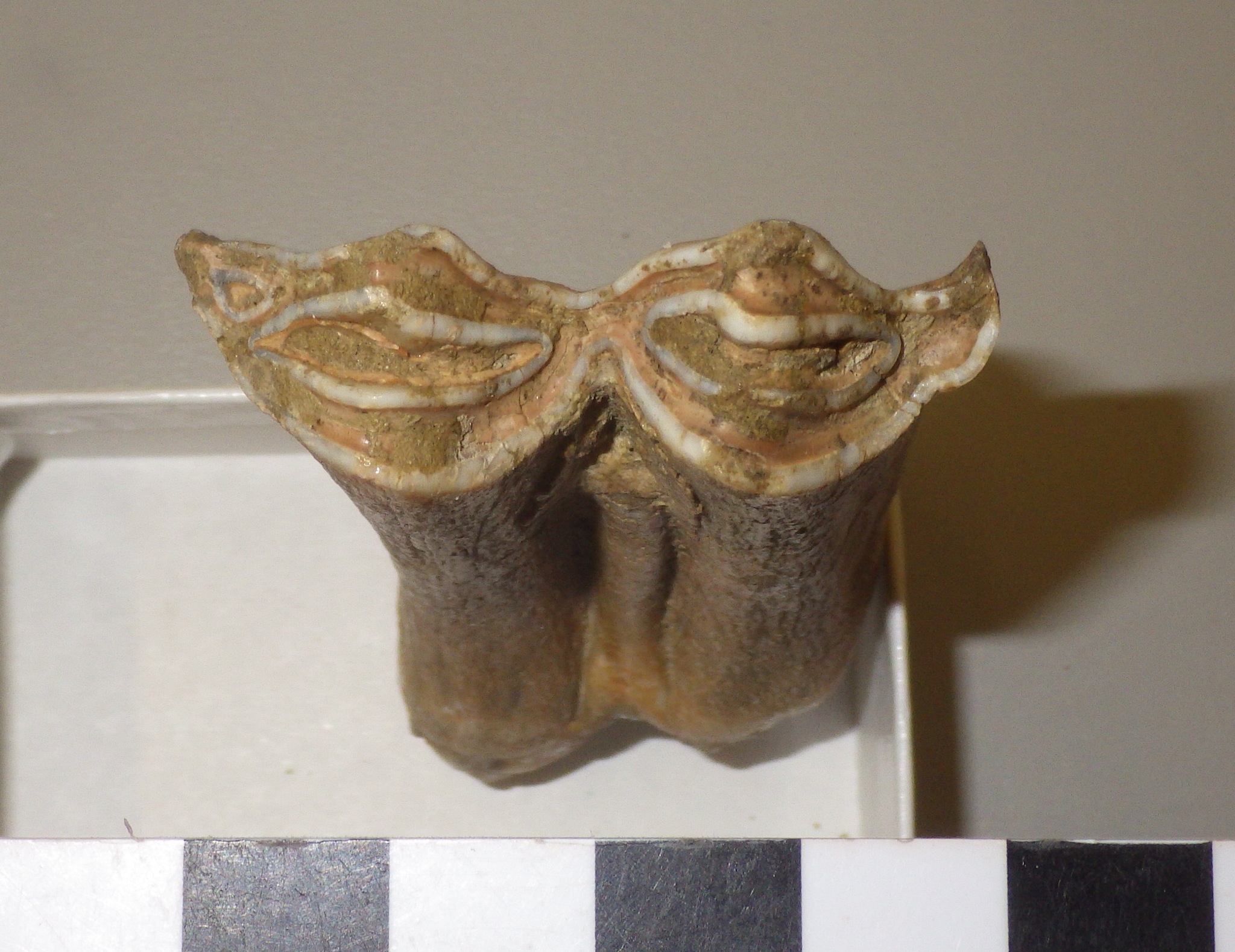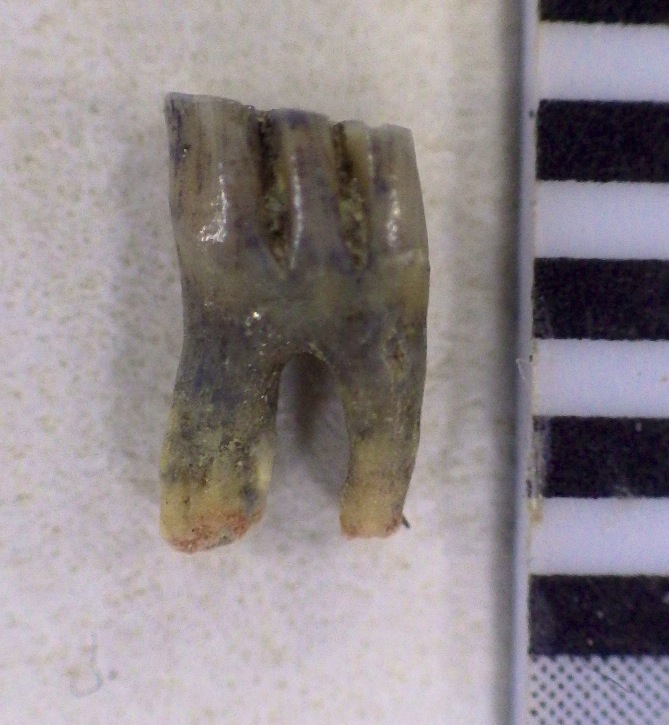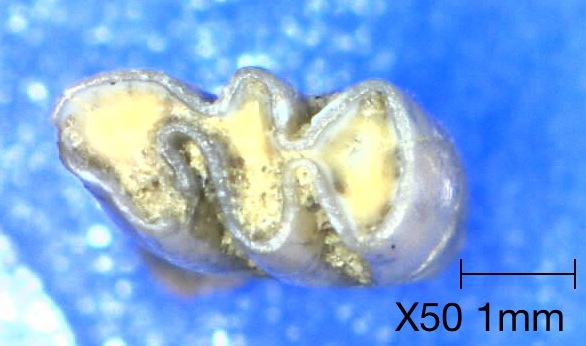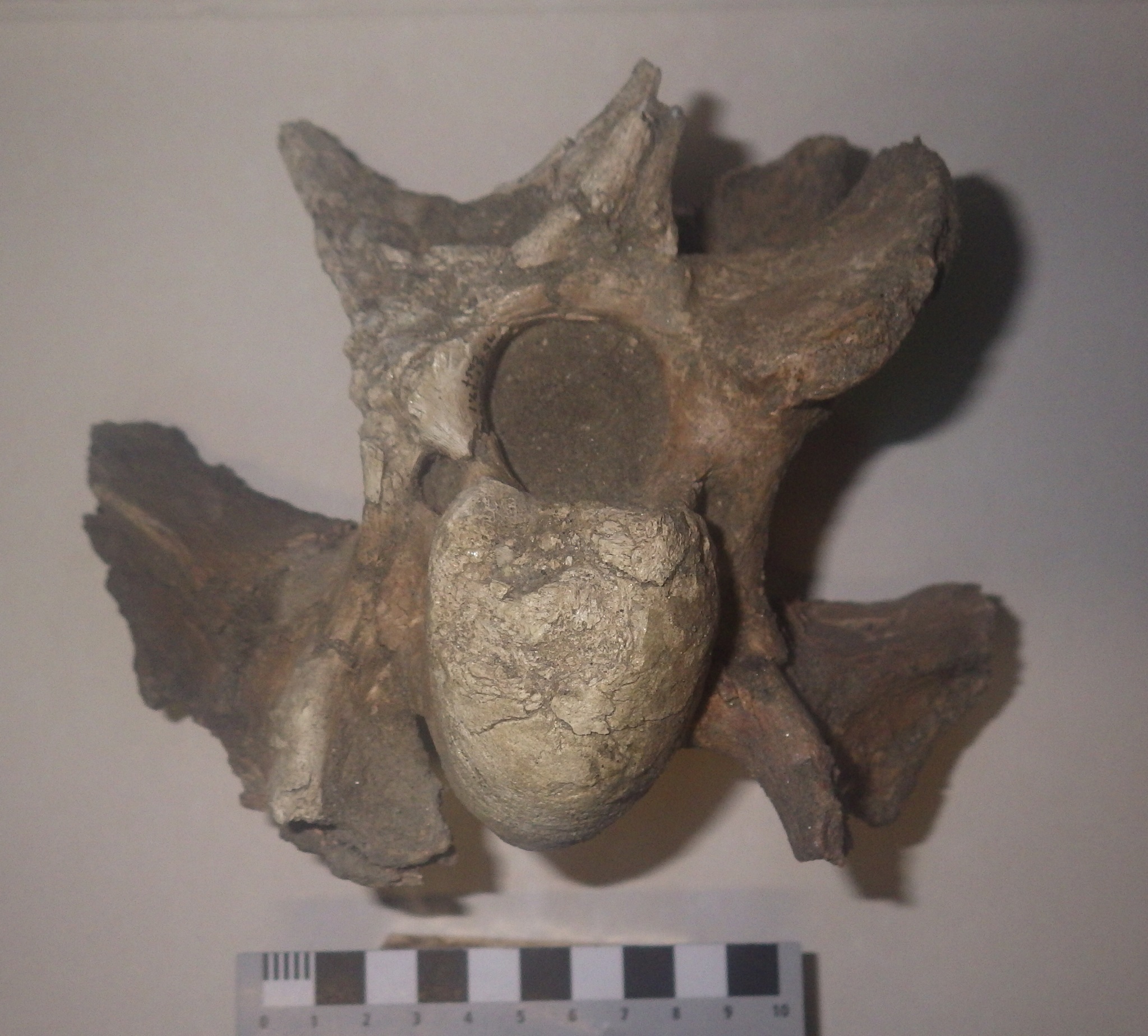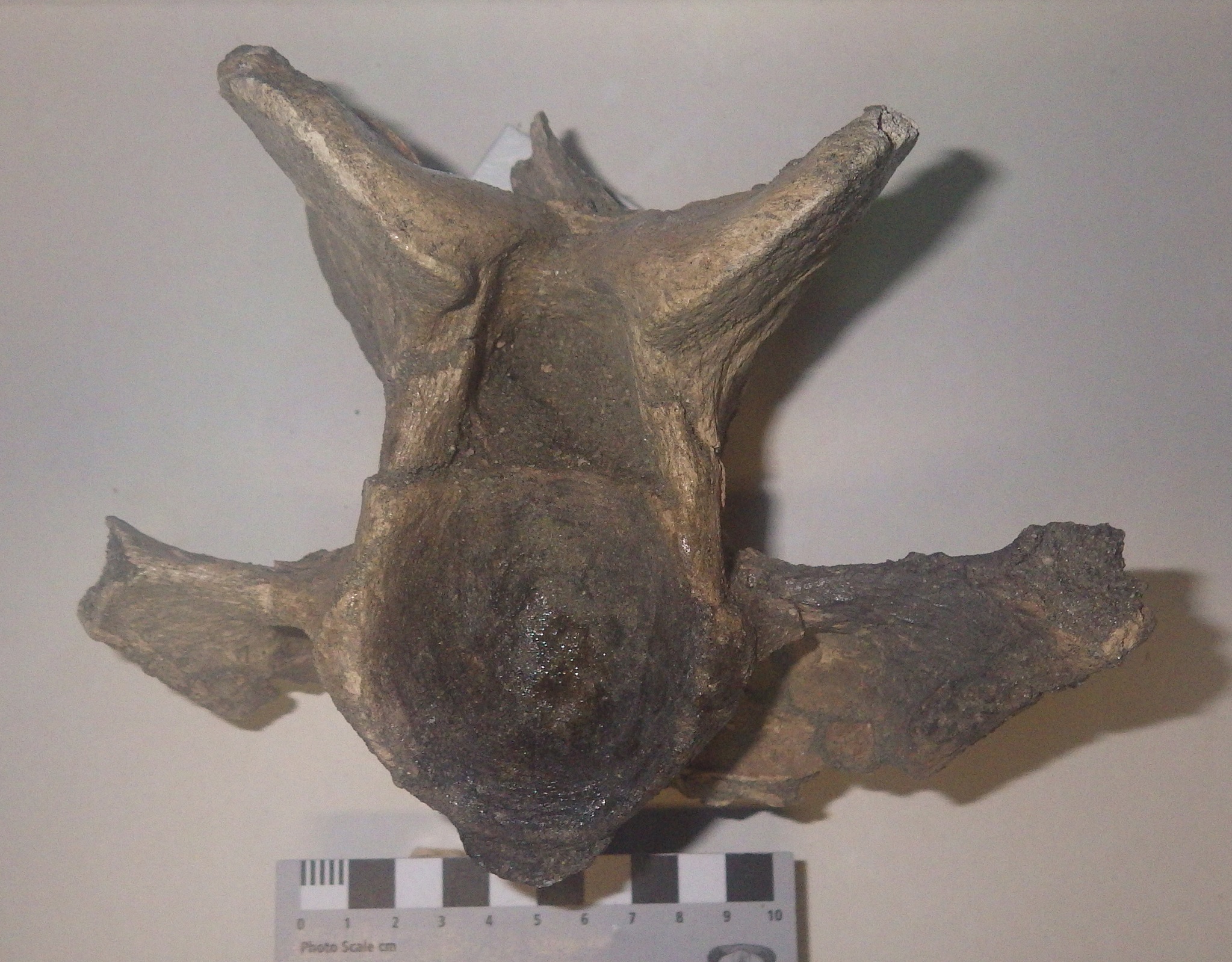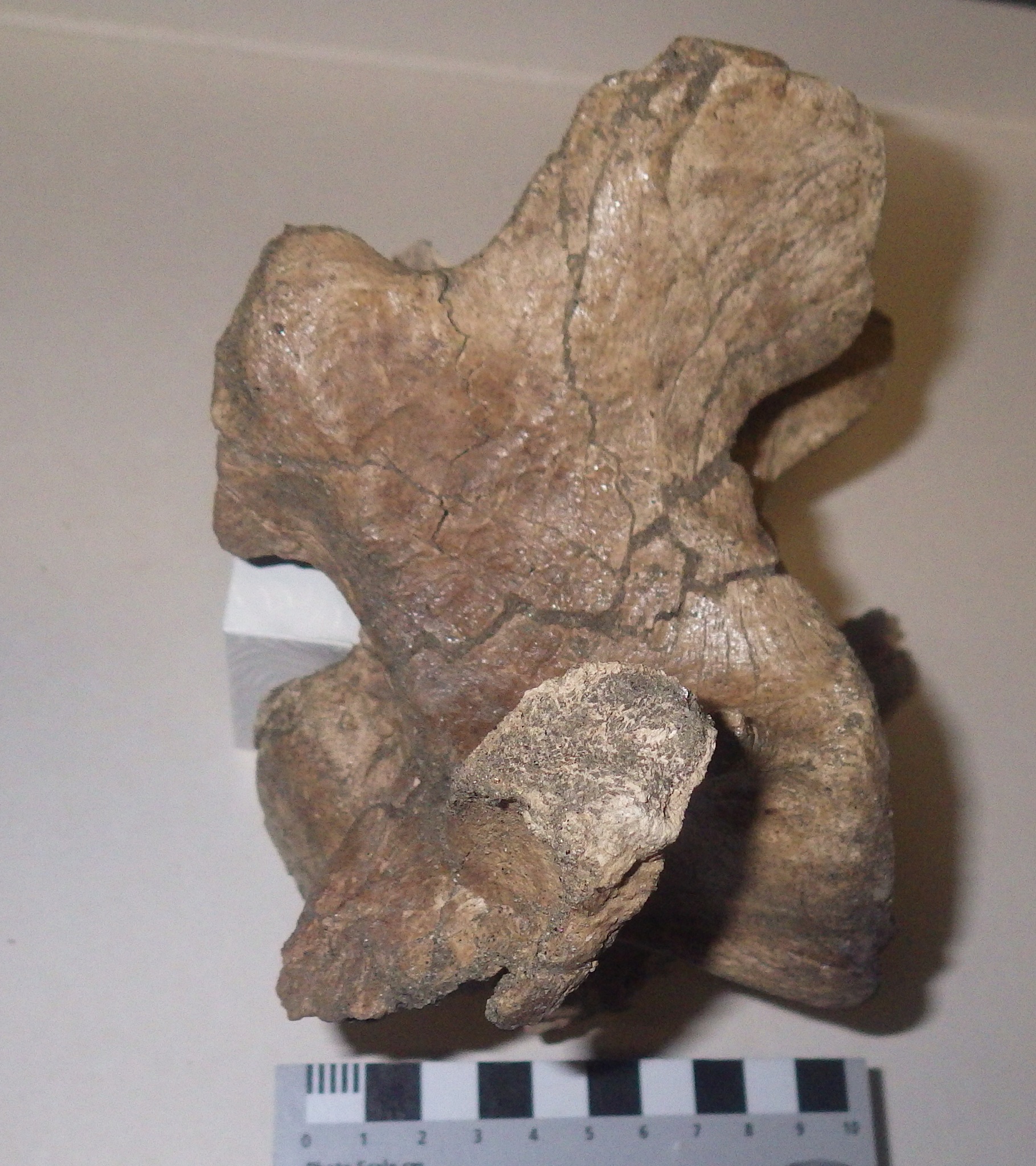 One of the prominent features of modern elephants are tusks, which are greatly enlarged upper incisor teeth. The presence of tusks is shared with most of the elephants' extinct proboscidean relatives, including mammoths and mastodons.Besides their size, elephant tusks are a bit different from most mammal teeth in that they lack enamel; tusks are made of ivory, which is dense dentine covered with cementum. Elephants use their tusks for a variety of tasks, including fighting, scraping bark off trees, and helping to loosen sediment when digging water holes, and the ivory tusks will get worn and polished at the tips. If the use is too vigorous the tip of the tusk may break off entirely. This isn't necessarily a problem for the elephant, because the tusks grow continuously. But it does mean that elephants may leave certain areas littered with broken tusk fragments.Mammoths and mastodons had tusks that were structurally very similar to those of modern elephants, and there they appear to have used them in similar ways. Their tusks were also just as prone to breakage, and isolated fragments often turn up as fossils. Shown above is the broken tip of a tusk that found near the western end of Diamond Valley Lake. Unfortunately, there are no morphological features present to tell if this came from a mammoth or a mastodon (at least none that I can identify). The tip (on the left) is polished and rounded from heavy wear, while the broken edge on the right is sharp and jagged. Below is a view of the other side of the same fragment:
One of the prominent features of modern elephants are tusks, which are greatly enlarged upper incisor teeth. The presence of tusks is shared with most of the elephants' extinct proboscidean relatives, including mammoths and mastodons.Besides their size, elephant tusks are a bit different from most mammal teeth in that they lack enamel; tusks are made of ivory, which is dense dentine covered with cementum. Elephants use their tusks for a variety of tasks, including fighting, scraping bark off trees, and helping to loosen sediment when digging water holes, and the ivory tusks will get worn and polished at the tips. If the use is too vigorous the tip of the tusk may break off entirely. This isn't necessarily a problem for the elephant, because the tusks grow continuously. But it does mean that elephants may leave certain areas littered with broken tusk fragments.Mammoths and mastodons had tusks that were structurally very similar to those of modern elephants, and there they appear to have used them in similar ways. Their tusks were also just as prone to breakage, and isolated fragments often turn up as fossils. Shown above is the broken tip of a tusk that found near the western end of Diamond Valley Lake. Unfortunately, there are no morphological features present to tell if this came from a mammoth or a mastodon (at least none that I can identify). The tip (on the left) is polished and rounded from heavy wear, while the broken edge on the right is sharp and jagged. Below is a view of the other side of the same fragment:
 This surface has a wrinkled appearance, and a rounded groove running for most of its length. I believe this represents an earlier break, in which the broken surface was smoothed off and polished prior to the entire tip breaking off. If that's correct, then this small fragment actually records two tusk-breakage events with a substantial amount of time between them.It's interesting to note that, according to Haynes (1991), while African elephants use their tusks for a variety of activities, they normally only break them when fighting each other. This seems to be especially prevalent drought years, when elephants will fight each other over access to water holes, although male elephants will fight in dominance displays, and there's evidence that mammoths and mastodons engaged in similar activities.Reference: Haynes, G., 1991. Mammoths, Mastodonts, and Elephants. Cambridge University Press, Cambridge, 413 p.
This surface has a wrinkled appearance, and a rounded groove running for most of its length. I believe this represents an earlier break, in which the broken surface was smoothed off and polished prior to the entire tip breaking off. If that's correct, then this small fragment actually records two tusk-breakage events with a substantial amount of time between them.It's interesting to note that, according to Haynes (1991), while African elephants use their tusks for a variety of activities, they normally only break them when fighting each other. This seems to be especially prevalent drought years, when elephants will fight each other over access to water holes, although male elephants will fight in dominance displays, and there's evidence that mammoths and mastodons engaged in similar activities.Reference: Haynes, G., 1991. Mammoths, Mastodonts, and Elephants. Cambridge University Press, Cambridge, 413 p.


